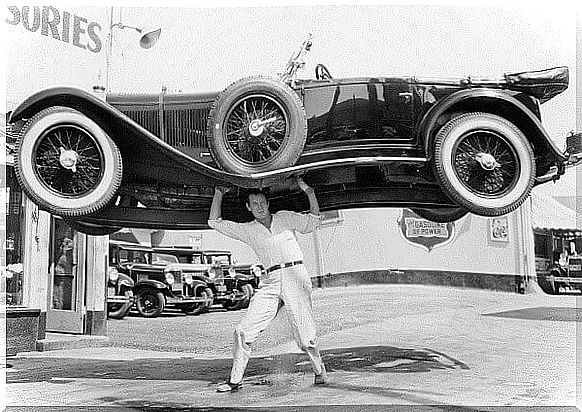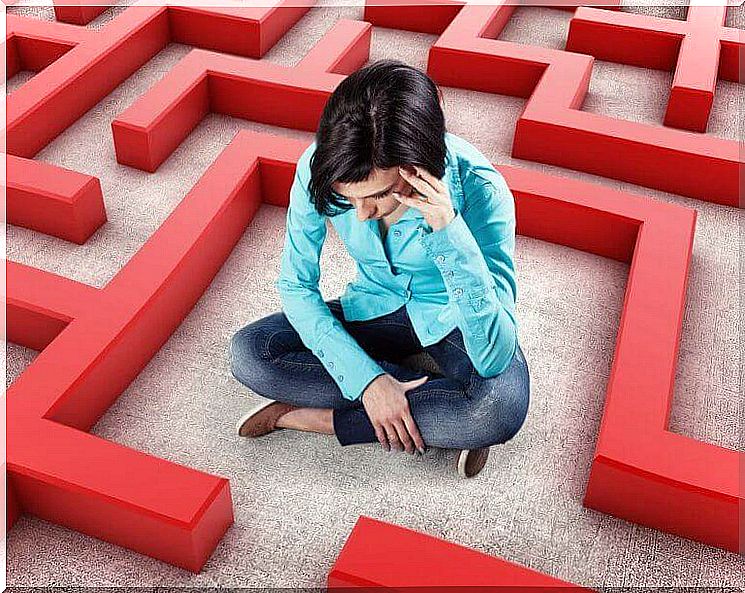Adrenaline, The Performance And Activation Hormone

Adrenaline allows us to reach euphoria when we play a sport. It’s also what makes us shudder when we feel attracted to someone. Furthermore, this hormone allows us to react to everyday dangers. However, in addition to favoring our performance and our activation, adrenaline also has a dark side. Excessive release of this hormone causes serious side effects.
We are dealing with a polyvalent substance, just like, for example, dopamine or oxytocin. However, adrenaline, which also plays the role of neurotransmitter, is one of the hormones that has the most impact on our behavior. For example, it activates our most instinctive survival mechanisms. But it is also the adrenaline that makes us fall into addictive behaviors and facilitates the appearance of anxiety or chronic stress states.
Day by day, more people need their adrenaline shots to break the monotony. This can lead us to experience life to the fullest or lead us to risky situations in an attempt to fill our voids.
As a curiosity, it is interesting to know that many professionals who are dedicated to crisis management usually train their clients to properly deal with adrenaline. For this, it goes through a series of dynamics and simulations with great physical and emotional stress, with which it is possible to regulate the types of responses. The purpose is simple: to train people so that they don’t lose control and so that adrenaline becomes the best ally, never an enemy.
To be able to do this, to know everything that this hormone is capable of causing in our body and influencing our behavior is incredible. We recommend that you find out below.

Adrenaline, what is it and what are its functions
In 1982, Angela Cavallo of Lawrenceville, Georgia, became Mother of the Year. So determined the press after she became known around the world for having done something difficult to believe if not for the presence of several witnesses. Her son, Tony, was in the garage repairing an old Chevrolet when, suddenly, the monkey holding the car failed and the worst happened: the car collapsed on top of the young man, leaving him trapped.
Angela Cavallo was 51 years old and weighed just over 65 kilos. She didn’t go to the gym, wasn’t very strong or had the habit of exercising throughout her life. However, when she saw her son’s feet under the car, she began to scream for help to the neighbors. Realizing that she wouldn’t have anyone’s help so quickly, she didn’t hesitate a second longer: she ran to the 1,500-pound car and lifted it, as if it were nothing. She held it up for a few seconds, just long enough for the neighbors to arrive and pull the unconscious young man out from under the car.
This feat actually contains two almost magical elements: mother’s love and adrenaline, a lot of adrenaline. Enough adrenaline that at any given time we could do extraordinary things to ensure our survival and that of others.
The hormone that activates us
Adrenaline belongs to the group of catecholamines (as are noradrenaline and dopamine) and is produced in the adrenal glands, located directly above the kidneys. However, we also have its synthetic version, epinephrine. This laboratory-created substance, being chemically identical to the biological one, is very useful in various medical emergencies for cardiopulmonary resuscitation.

To understand its mechanism of action, we can take as a reference what happened to Mrs. Angela Cavallo and her son:
- When we see a situation of threat or danger (a car falling on top of our child, for example), the hypothalamus, responsible in part for our emotional reactions, activates the sympathetic system to emit a type of determined response to this stimulus.
- The hypothalamus has a direct connection with the adrenal medulla and the latter with the adrenal glands. Glands prepared to quickly release a good amount of adrenaline to activate us, to influence our behavior and the type of our response.
Adrenaline uses very specific mechanisms of action
On the other hand, together with the release of adrenaline, a series of very refined biological mechanisms are put into practice, with which it promotes our reactions:
- We lose “situational awareness”, meaning our brain tries to focus all our attention on the same thing. What’s around us doesn’t matter.
- On the other hand, the brain chooses which senses will be most useful. In fact, it is quite common that it promotes a hearing exclusion. That is, we often fail to listen so accurately to reinforce another sense: vision.
- So our pupils will dilate almost immediately to let in more light. That way, we can see more clearly.
- Adrenaline also has a well-known characteristic: the dilation of blood vessels and the increase in heart rate. This happens for a very specific reason: to pump more blood so that more oxygen can reach our muscles and thus have a lot more strength and a greater capacity to react.
At the same time, and this is also interesting, the brain will order the immune system to release large amounts of dopamine and analgesic endorphins. All of this will allow us not to feel pain if we are hurt. And this made, for example, that Mrs. Angela Cavallo did not feel any discomfort when lifting a car weighing 1,500 kilos.

The positive and negative side of adrenaline
Adrenaline has many advantages. It can encourage us to overcome surprising challenges, and it can also be as pleasurable as it is addictive. It makes it easier to adapt to any stressful situation, activates us when we play risky sports, facilitates the action of giving our best in competitions or making the best use of a romantic encounter.
The trembling in your hands, the knot in your stomach, the dilated pupil when you look at someone you are attracted to are direct effects of adrenaline. It is she who makes us feel euphoric when dancing or being in the company of other people having fun. She is the one who offers us an incredibly pleasurable discharge when we ride a roller coaster at an amusement park or feel the speed while driving.
As we can see, many of these behaviors have, at the same time, a “risk” component. It is exactly when we put our feet on the ground, after coming out of these experiences unscathed, that we feel this peak of euphoria that, little by little, is accompanied by an enormous and gratifying relaxation. All this makes there are people addicted to adrenaline, a darker side about which you need to find out more.

Adrenaline addiction
There are people who go to the more dangerous side of risky sports . There are those who carry out borderline behaviors and actions, in which they put their lives at risk. Behind this type of behavior that many of us have seen in a situation, there is sometimes something more than a simple pursuit of pleasure and adventure. This intense adrenaline rush that these people experience also serves to fill a void, to reinforce a sense or to mask an emotion.
When we think of an addict, we visualize almost immediately a person who uses certain drugs and does so out of dependence (not so much to seek pleasure, but to eliminate the discomfort). However, something that is not always talked about is that adrenaline and this constant search for taking risks in order to feel alive also represent, at the same time, a very specific type of addiction.
On the other hand, as with other addictive substances, it is common that little by little you feel the need for higher “doses” to feel the same effects as before. The organism, little by little, develops a tolerance. Therefore, we feel the need to seek riskier experiences, more extreme behaviors to get the same feeling.
Still, it is necessary to differentiate an athlete who performs a risky practice with responsibility and professionalism from a person who, doing the same thing, is unable to think or reflect on the consequences of their own acts.
In this sense, we must think that the addict only seeks to satisfy a biological need.
Adrenaline and chronic stress
We’ve already seen that adrenaline can turn into a very specific type of addiction. Now, it is also interesting to remember another very negative aspect of adrenaline. An aspect that little by little, day after day, facilitates the construction of chronic stress.
This term, “chronic stress”, is the direct result of our ongoing pressures and tensions, those that we don’t stop at the right time or that we don’t manage properly. This state is the direct result of the accumulation of two hormones in the blood: adrenaline and cortisol.

When we go through situations that cause us discomfort, that bother us, that attack our physical and emotional balance, our brain interprets them as a danger, as a focus against which to react. That’s when the adrenaline kicks in. And it is also when we, sensing this series of threats, should be able to act efficiently.
However, we don’t always succeed. And from then on, adrenaline builds up and causes changes in our body (hypertension, tachycardia, poor digestion…). We lose our health and put our lives at risk. So it’s not just anything, it’s not something we can neglect, it’s not something that can be put off until tomorrow or next week…
To conclude, we could say that adrenaline performs its “magical” function as long as it is released in a timely and specific way. It is in these situations that it acts as a vital impulse to help us react, to keep us safe, to improve our ability to adapt to certain situations. However, if we seek its daily effect or allow tension and fear to build up steadily within us, adrenaline will act in the worst possible way: robbing us of our health.
References:
Kandel (2001). Principles of neuroscience Madrid, LTC.
Hart, A (1995). Adrenalin and Stress. Thomas Nelson editors.
Bennett M (1999). “One hundred years of adrenaline: the discovery of autoreceptors”. Thieme Publishing Group.









